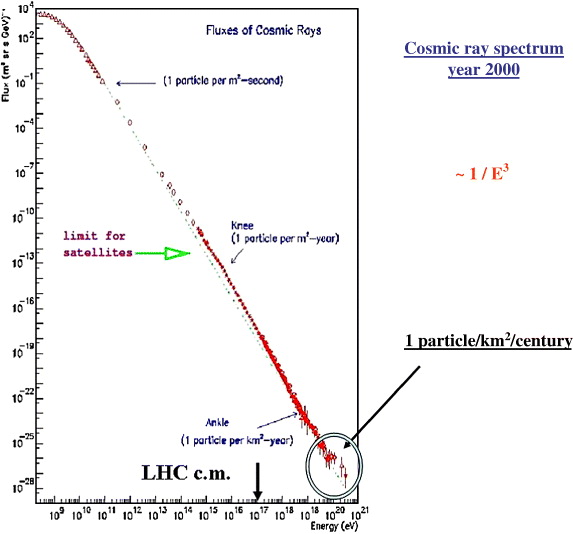The "per MeV" refers to the fact that the flux rate $f(\theta,\phi,E)$ tells you the particle flux per unit solid angle per unit energy. That is, $f(\theta,\phi,E)\ d\Omega \ dE$ is the particle flux (in particles per unit area per second) within a small solid angle $d\Omega$ around $(\theta,\phi)$ and a small energy range $dE$ around $E$.
If you want to find the particle flux per unit solid angle (without the energy part), then you need to integrate over all energies in some range, i.e.
$$\hat f(\theta,\phi) = \int_{E_1}^{E_2} f(\theta,\phi,E)dE$$
which is the flux of particles per unit steradian with energy between $E_1$ and $E_2$. It's worth noting that when you have a histogram with energy bins $\Delta E_i$, then the quantity being plotted is $f(\theta,\phi,E_i)\Delta E_i$.
To obtain $f(\theta,\phi,E)$ from a histogram, you divide the counts in each bin by the bin width. Conversely, if you have the so-called differential flux $f(\theta,\phi,E)$ and want to know how many counts to expect in a histogram bin at some energy, you simply multiply it by the bin width.
The figure in question is this one:
The point marked "1 particle per m$^2$-second" has $f(\theta,\phi,E)\approx 10^{-1}$ m$^{-2}$ s$^{-1}$ sr$^{-1}$ GeV$^{-1}$. If we multiply by $4\pi$ (assuming the flux is isotropic) and a bin width of $1$ GeV, then we get the right flux.
Apparently at $10^{11}$ eV, the bin sizes are approximately $1$ GeV. The logarithmic scale suggests logarithmic binning, so at $10^{16}$ eV we would expect a bin size of about $10^5$ GeV. The plot indicates that $f(\theta,\phi,10^{16}\text{ eV}) \approx 10^{-14}$ m$^{-2}$ s$^{-1}$ sr$^{-1}$ GeV$^{-1}$, so multiplying by $4\pi$ and $10^5$ GeV yields a flux of $0.4$ particles per square meter per year, which is the right order of magnitude for the second label.
As far as interpretations go, you should take the first label as saying that about 1 particle with energy within $1$ GeV of $10^{11}$ eV passes through a 1 m$^2$ target every second. The second label tells you that about 1 particle with energy within $10^5$ GeV of $10^{16}$ eV passes through a $1$ m$^2$ target every year.
An alternative way to say it is that one particle with energy within $1\%$ of $10^{11}$ eV passes through a $1$ m$^2$ target every second, while one particle with energy within $1\%$ of $10^{16}$ eV passes through a $1$ m$^2$ target every year.

